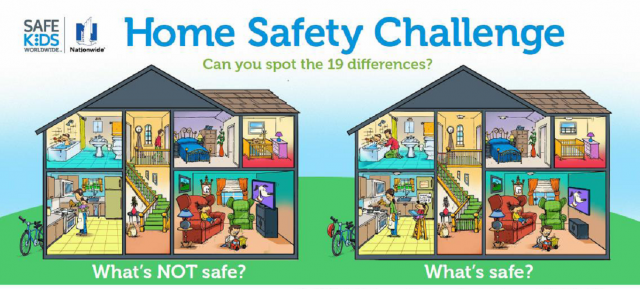How Safe is Your Neighbourhood? Use These 5 Tools to Find Out
Take a drive around your neighborhood and take in at all that it has to offer. You might find parks, playgrounds, eclectic stores, unique restaurants and other neighborhood attractions that make it a wonderful place to live and raise a family. However, there might be a dark side to that neighborhood that you simply can’t see from a casual drive. The biggest question is, “is that neighborhood safe?” Finding the answer is actually easier than you think.
Neighborhoods are more than kids playing ball or dogs chasing after a frisbee. They are places where people live and work, and it’s a place you want yourself and your family to feel safe day or night. But how do you know if a neighborhood is safe, or how safe it really is? The answer may surprise you, because if you have a computer and access to the Internet, you can find out all you need to know.
There are a variety of online tools that are used to take a deep dive into a specific neighborhood, from finding out crime statistics to learning how many ex-felons live in the area. People often have many questions, like were there a lot of vehicles stolen during the past few months? How many homes were broken into in that particular neighborhood? The list goes on and on, but answers are close by.
Tools to use: SpotCrime
If you’d like a visual look into what type of crimes have happened in a particular neighborhood, anywhere in the country, SpotCrime is for you. It’s a map-based visual that shows all types of crimes that will provide an accurate overview of not only the type of crimes, but also the amount of crimes in a specific neighborhood.
The site collects all its data from police agencies and other validated sources which is then placed on a Google map. Viewers can also search for crime data that occurred near any specific address. SpotCrime also offers daily or weekly statistic updates via email, making the information the most current available.
Tools to use: Nuwber
Nuwber is an excellent online tool used when searching for people who live in or near a neighborhood. It’s a people search site that offers a huge database of US citizens with pertinent information like name and address, phone number and more. In addition, the site provides up-to-date background information that includes police records, social media profiles and more.
You are able to search by name, address, phone number and email address. Searches can be conducted for safety reasons or to simply reconnect with an old colleague or a former high school friend.
Tools to use: Nextdoor
Another easy-to-use tool is Nextdoor, a private social network that provides comprehensive information about your neighborhood. Once you join, you’re able to converse and chat in real time with neighbors who live near you. It’s an online tool that even offers a personal alert system to members.
In fact, members are the ones who are the first to report neighborhood crimes, like packages stolen from a neighbor’s porch, recent area robberies and more. In addition, the site offers community news, items that are for sale and local service providers who often work in the neighborhood.
The only caveat regarding Nextdoor is that because people sign up as members and there is nobody checking on the accuracy of their information, you may be conversing with someone who isn’t who they say they are. However, you can easily vet their information using Nuwber to reveal their actual name and address.
Tools to use: Family Watchdog
In terms of family safety, knowing if any ex-felons or sex offenders are living in your area is most helpful. That’s where Family Watchdog can help. The Family Watchdog website offers viewers a free public record search that reports on any registered sex offenders who may be living in your area.
The reason is simple: whenever a convicted sex offender is released from prison, they are required by law to register as sex offenders and list their current address. They also are required to notify local authorities whenever they move into or out of a neighborhood. You’ll be able to get current information on their location, the exact nature of their sexual offense and whether they are living near parks, shopping areas or schools. Having that knowledge can help you alert family members and children about areas that they need to avoid.
Tools to use: AreaVibes
When looking at neighborhoods to live in or simply looking at safety of a specific area,AreaVibes can help. The site not only offers information about crime in a neighborhood, but also provides information about housing, education, area amenities and more. AreaVibes provides a ranking system of neighborhoods based on the number of different crimes including robbery, rape, assault, property crimes and more.
A viewer can simply enter a zip-code and AreaVibes will provide “neighborhood livability” score that ranks the neighborhood in terms of safety. This enables a viewer to rank a neighborhood and compare it to others to help determine which area is the safest one for you and your family members.
Summary
Before moving to an area or a specific neighborhood, it pays to investigate the safety, so you and your family can enjoy peace-of-mind. The tools outlined in this article offer some of the top ways to gather key information on crime stats and other safety markers that deem a neighborhood safe.
Whether you’re interested in finding current crime stats, school information, status of ex-felons or sex offenders living in the area or simply want to converse with others online that live in your neighborhood, there’s a tool for you to use. Most importantly, these tools are easy to use and are accurate.
This is a Sponsored post










